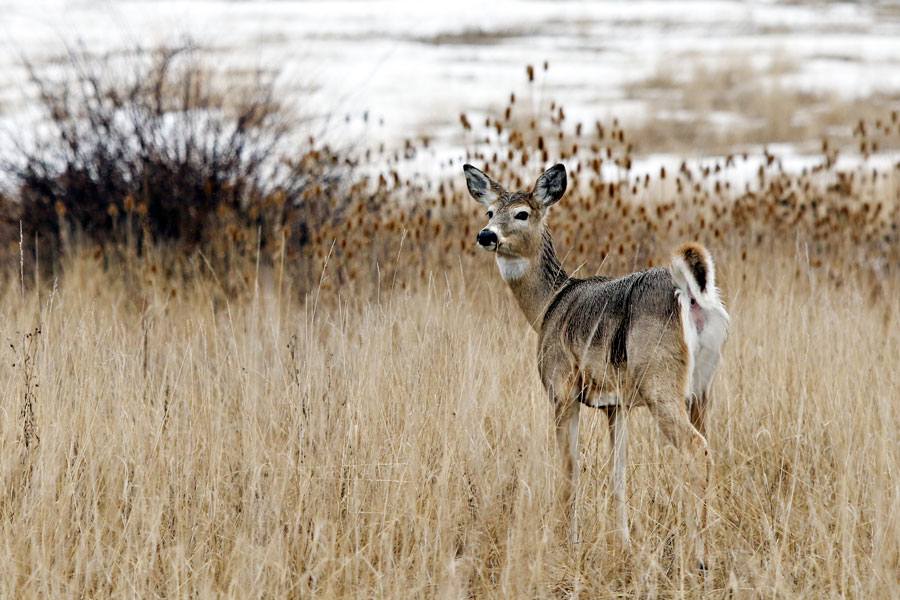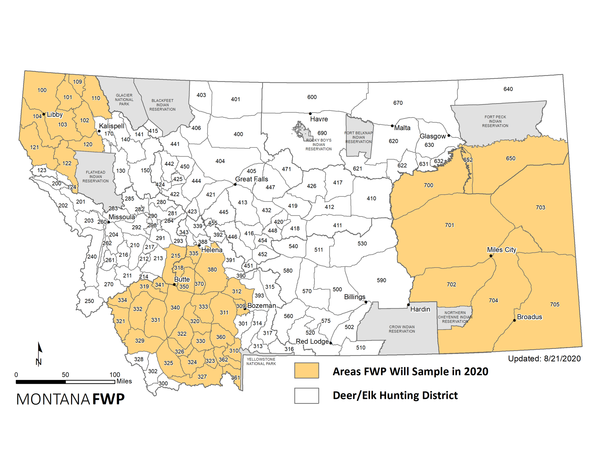A good read for those interested. I imagine our fellow states involved in the battle against CWD face the same challenges.

A hassle to stop at required check stations for a CWD check?
With or w/o game, someone traveling to locations, stay at hotels, etc will inevitably cross required stop points at check stations...
Hunters are likely the key tool towards identifying CWD presence. Encourage hunters to have their deer tested, be it voluntary (outside CWD zones) or within a CWD zone where required would be a value, IMO/E. A hassle? Sure... it may take a bit of time though I typically enjoy the chat with our FWP, Intel gathering as well as expressing appreciation for their responsibilities.
Outside Busse's stance to avoid CWD Check Stations, I agree with his opinions as equally shared by Anderson (R1 Wildlife Mgr) and VandeVoot (MT Outdoor Recreation Director).
Long term health of deer, elk, and even moose within the CWD context has a gripping reach on public land and conservation as a whole...
Pretty challenging future for the various <insert your State> conservation funding and the future #'s of hunters.
Chronic Wasting Disease’s Potential Economic Impacts - Flathead Beacon
Every autumn for 24 years, Kalispell resident and Backcountry Hunters & Anglers Board Chairman Ryan Busse has traveled to the wide-open spaces of Northern Montana’s Hi-Line to hunt, where few people reside and healthy wild game populations roam. He’s scaled the entire remote Hi-Line in search of...
flatheadbeacon.com
FWP also requires hunters to stop at check stations to test their game for CWD presence, a hassle that Busse avoids by hunting in areas where the disease is not present.
A hassle to stop at required check stations for a CWD check?
With or w/o game, someone traveling to locations, stay at hotels, etc will inevitably cross required stop points at check stations...
Hunters are likely the key tool towards identifying CWD presence. Encourage hunters to have their deer tested, be it voluntary (outside CWD zones) or within a CWD zone where required would be a value, IMO/E. A hassle? Sure... it may take a bit of time though I typically enjoy the chat with our FWP, Intel gathering as well as expressing appreciation for their responsibilities.
Outside Busse's stance to avoid CWD Check Stations, I agree with his opinions as equally shared by Anderson (R1 Wildlife Mgr) and VandeVoot (MT Outdoor Recreation Director).
VandeVoort is concerned that CWD will impact the already declining participation in hunting, which may have even broader and more long-term consequences on the country’s public lands.
Long term health of deer, elk, and even moose within the CWD context has a gripping reach on public land and conservation as a whole...
Pretty challenging future for the various <insert your State> conservation funding and the future #'s of hunters.





